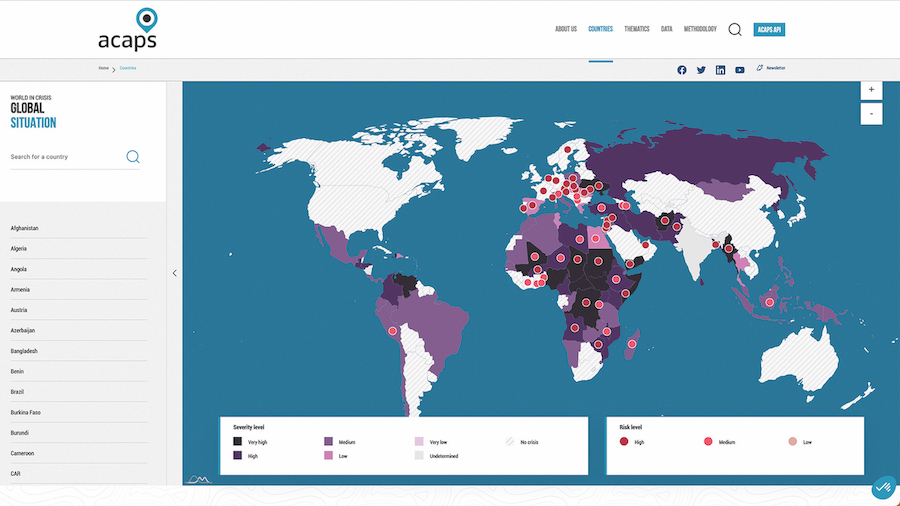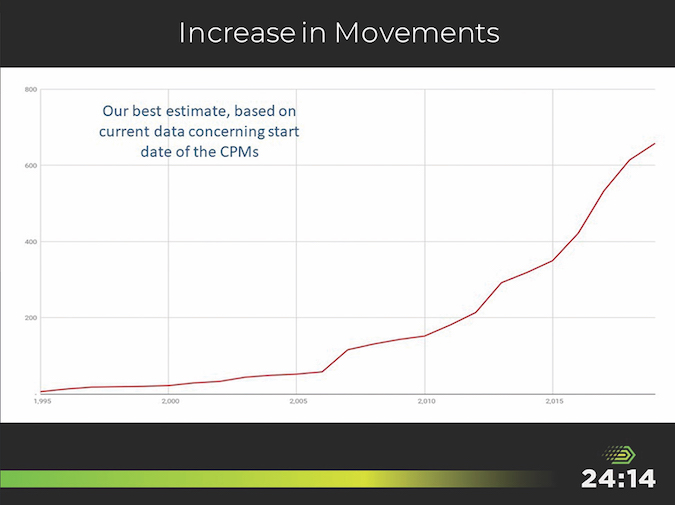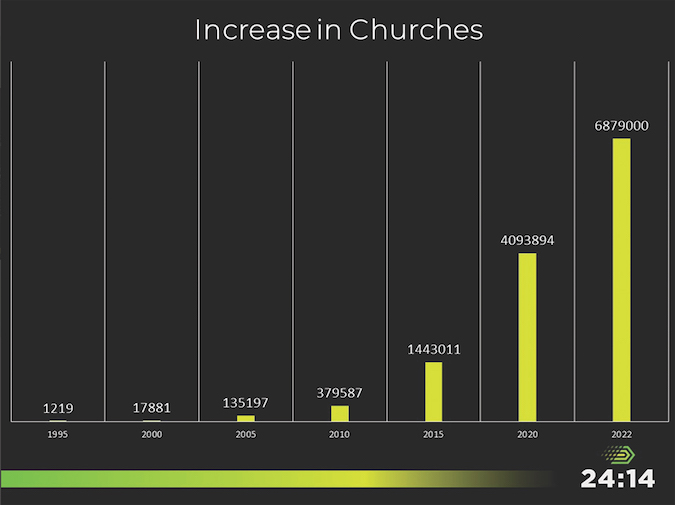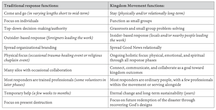Movements Responding to Crises
24:14 Goal: Movement Engagements in Every Unreached People and Place by 2025 (26 Months)

Screenshot of live map from October 1, 2023. Even more crises are being responded to live that are not shown on the map (due to politics) including in India, China, and others.
http://www.acaps.org/en/countries/

As you read this article, disasters and crises are pounding the unreached world, with people crying out. Even if you read this article days, months, or even years after the publication date, this is undoubtedly still true. Right now, dozens of significant crises are occurring—both chronic and acute, often with the greatest amount of destruction occurring in places with the least Gospel saturation.
Yet, ironically, many of these same places are experiencing accelerated kingdom multiplication. Overlaying live disaster response on a map with current locations of Kingdom Movements and remaining unreached peoples often highlights the same areas of the world. Kingdom Movements are beginning and increasing amid disasters. Disciples and churches are responding rapidly and lovingly with a long-term vision to care—not just through relief but also through recovery and rebuilding to sustainability.
Crises and disasters have increased significantly in the last few decades, just as movements have multiplied exponentially. A recent article in Forbes1 cites a United Nations statistic that five times as many natural disasters are occurring now as were occurring 50 years ago. U.N. peacekeepers on active missions for civil unrest and peace pursuits have increased nearly 10 times in the last 50 years.2 At the same time, Kingdom Movements have gone from a few known movements in the 1990s to 1,965 today, reaching more than 1.4% of the world’s population and still growing, according to the 24:14 collaborative research team. One researcher commented, “Movements are sometimes doubling out of crisis response efforts,” with the disciples and churches multiplying. As urgent needs have increased, so has kingdom fruitfulness. As Paul wrote to Titus, Our people must learn to devote themselves to doing what is good in order to respond to urgent needs and not live unproductive lives (Titus 3:14, NIV).


www.2414now.net/resources (View the Dashboard Update or email [email protected] to connect.)
As we anticipate the fulfillment of Matthew 24:14, and this gospel of the kingdom will be preached in the whole world… (NIV), several verses lead up to the “and.” One of those is Matthew 24:7 which describes major challenges preceding the fulfillment of verse 14: Nation will rise against nation, and kingdom against kingdom. There will be famines and earthquakes in various places. The 24/7 reality of disasters and crises currently being responded to can prompt us to pray 24/7 toward Matthew 24:14.
From Genesis to Revelation, we see that God frequently uses crises like the man-made and natural disasters mentioned in Matthew 24:7 to advance His kingdom, move His people around, and turn people back to Him. For example, the Exodus saga of God’s people journeying through man-made and natural disasters towards the promised land. Then the series of kings and prophets, as the wars they fought and the disasters they faced turned people back to God and gave Him glory. Similarly, Jesus’ miracles often took place in response to chronic or acute crisis moments in the lives of the disciples or community. This brings us to the Church in Acts and its responses to persecution, prison, famine, storms, and more as the Church grew and the movement Jesus started continues today. Crisis response has been an evident part of the Church historically since Acts. In our time, disciples have responded compassionately to urgent needs during wars, epidemics, and natural disasters.
As disciples in Kingdom Movements love one another, the biblical principles guiding their lives can easily be applied in a disaster context. As a result, in the wake of a disaster, they are finding receptivity paired with reproducibility. The movements are thriving even as man-made and natural disasters rise, with more than 115 million disciples in such movements globally, according to the current 24:14 Dashboard. During the recent COVID-19 pandemic, most (if not all) movements engaged in reaching out to the least, the last, and the lost in creative ways. Through follow-up during relief and recovery, out of love for God and people, disciples across the globe saw significant multiplication of fruitfulness. During the pandemic, Stan Parks (Church Planting Movements coach) wrote: “God is not surprised by this crisis. But we may be surprised by how He will use it.” Accelerated multiplication in the recovery and rebuilding phases did not happen immediately, but rather as a result over time of loving God and expressing love for others through concrete action. The pandemic sparked many to realize the potential and tangible impact when we have eyes to see God opening doors through a crisis, and we are willing to join in His work.
Examples of crisis response by disciples in movements
Currently, disciples in Kingdom Movements are responding to disasters in various parts of the world—disasters that may be in the news for just a short time at the start or never make the news at all, including in their own countries. For example, Turkish and Syrian disciples continue to care for believers and those from other faiths, as the acute earthquake of February 2023 turns into a chronic crisis. Sudanese refugees flooding surrounding nations are being met by collaborative groups of disciples and churches seeking to help. They create within the camps small communities that care for one another physically, emotionally, and spiritually. Ukrainian and Russian disciples are caring for the wounded on both sides of the border, equipping would-be refugees for the journey before they flee. They are educating people on how to identify and avoid human trafficking as it sweeps their land and strengthening one another as the war rages on.
Pakistanis are coming to one another’s aid, and Indians around Manipur are visiting fellow believers after painful persecution. Nigerians are hosting in their homes fellow believers who have fled terrorism. Ethiopian and Somali believers are bringing food to one another during the famine. Burmese and Thai believers are finding creative ways to get aid to the least of society in the midst of devastating conflicts and cyclone damage.
These are just a few examples of ministry happening right now around the globe. As we eat, sleep, go to work, and come home, these crises and disasters are the “normal life” of a vast number of believers across the world, with acute crises consistently compounding the chronic crises and complexities. Practically the whole 10/40 window experiences perpetual natural and man-made disasters and crises.
Hebrews 13:3 (NLT) exhorts: Remember those in prison, as if you were there yourself. Remember also those being mistreated, as if you felt their pain in your own bodies. How often does the empathy instructed in Scripture inform our strategies and responses? One local movement leader in Central Asia shared that they began responding to disasters because the people he was discipling came to him saying, “We need to go help those affected by the wildfires because they are hurting and we have been called to love and help one another.”
In Nepal, a movement leader echoed the reaction of Joseph in the Bible, who led a nation in disaster response during a chronic seven-year famine, telling his brothers, You intended to harm me, but God intended it for good to accomplish what is now being done, the saving of many lives (Gen. 50:20). This Nepali movement leader shared that through the 2022 earthquake, they saw the reconciliation of disciples with those who had persecuted and ostracized them. As they shared the little relief supplies they had, to help those who had hurt them, God used forgiveness and acts of kindness to touch the hearts of their former persecutors. As the stories of the disciples’ kindness spread, many others in the community began to follow Jesus. The local networks of these leaders now make go-bags with extra supplies from the means they have, in order to increase their resilience to be able to quickly help others. Shifting from reactive crisis response to a proactive approach, several Kingdom Movements are preparing to make the most of the next opportunities to come. In similar ways, many also have created basecamps (self-sustaining community areas) that serve as homes of refuge in times of disaster.
Kingdom Movements are engaging in relief that guards against dependency, in part due to sensitivity concerning when to shift from relief to recovery. Across the phases of disaster response, observation and timing are crucial. The relief phase typically lasts two to four weeks, focused on preventing more people from dying. Then the recovery phase lasts an average of six to 15 months, focused on putting resources and structures in place to function again in a new normal. Finally, the rebuilding phase can last for years or decades. (See graph in P.R.E.P.A.R.E. article).
From a disciple’s point of view, the goal is to recover glimpses of God’s design by applying kingdom principles to restore a community to a situation better than it was before. Examples of this might include multiplying cooperative businesses to sustain community transformation, and applying improved farming techniques, clean water, or hygiene into regular practice in the post-disaster community. These happen in tandem with multiplying disciples and churches who love God and love others.
Unique features of movement disciples’ response to crises
Kingdom Movements pursue not only multiplication of disciples but also being disciples worth multiplying. The depth of discipleship in life and community transformation cultivates quality in the character of the leaders being multiplied. In disaster and crisis response, this has been evidenced by the disciples as they have responded to hardship in ways contrasting with the world’s reactions to suffering. As a result, many have been drawn to the light of Jesus, as disciples have brought peace in the midst of chaos, given sacrificially while others hoarded, upheld integrity in the midst of corruption, shared hope amid devastation, and followed God’s redemptive ways.
A traditional approach to crisis management is no longer sufficient for today’s problems.3 Since Kingdom Movements are decentralized, they don’t respond to disasters in traditional, centralized ways. Multiplicative kingdom approaches address humanitarian response challenges in several ways. Their decentralized movement structure allows for a quicker response to disasters. As leaders and small groups respond, it also draws less attention than the large centralized groups. Research has found both a need and a challenge to increase community engagement in the system of responses.4 Kingdom Movements’ response consistently mobilizes a mass of volunteers, often from among those affected by the disaster. This becomes one of their major resources for building capacity, while maintaining a decentralized structure. Rather than a widespread individual focus, Kingdom Movements quickly form small groups and mobilize those affected as one of the greatest resources. This puts them ahead of the curve, according to some humanitarian-response research that shows a significant gap in research on mobilization from within a crisis context.5
Tackling crisis response through collaborative effort is not new. However, forming new small groups, networks, and collaborative tools such as leadership development during crisis response is now seen as a phenomenon for further study according to the research.6 The small groups formed out of one disaster response become the response team for the next disaster in or near where they live. They are then able to serve and equip across a network of regional leaders, creating a nationwide response force.

A disciple is someone who hears, acts on what they have heard, and shares it with others. Kingdom Movements mobilize ordinary people to respond to disasters and crises. They equip disciples, both from within the disaster area and from nearby, to join God in responding to a crisis in some useful way. While existing-church resources such as buildings, budgets, and paid staff can be helpful in crisis response, they are not required for responding to disasters in love, humility, and wisdom.
Disaster response calls for “all hands on deck,” including both centralized and decentralized structures that can partner together in various ways. For example, many times large organizations with supplies have partnered with a Kingdom Movement as the local distribution network on the ground. The context of a crisis intensifies the need to connect, communicate, and collaborate across structures, societal boundaries, and diverse experiences. Collaboration can accelerate and increase effectiveness through working together, and many movement leaders have learned that collaboration can happen at varying degrees with different groups. Not all groups are equally compatible and helpful as partners in the same ways.
Brothers and sisters in non-Western cultures often grasp well the biblical twin foundations of Great Commandment and Great Commission. In many unreached nations, following these two together constitutes a normal way of life, with minimal bifurcation between being Jesus’ hands and feet and proclaiming the Good News of God’s kingdom.
We need to note that disaster response is not neutral ground. Corruption advances rapidly, with some people wanting to take advantage of those who are vulnerable, isolated, and desperate. As Jesus said in John 10:10 (NIV), The thief comes only to steal and kill and destroy; I have come that they may have life, and have it to the full. This compels us all the more to bring God’s kingdom through multiplying disciples and churches that build community, faith, and redemptive purpose among those affected by the disaster.
Kingdom Movements respond to crises on the foundations of God’s Word and His Spirit, with a biblical perspective on suffering. No story or idea in the world can sustain people through the trials and temptations of disasters as effectively as knowing the word that sustains the weary (Isa. 50:4). In the metanarrative of the movement of God, disciples continue to respond to crises and disasters readily today, as seen throughout Scripture. We praise God for the many ways disciples in today’s Kingdom Movements are responding biblically by recognizing crises as door openers for demonstrating and proclaiming the kingdom of God. As brothers and sisters in other countries learn to devote themselves to doing what is good in order to respond to urgent needs (Titus 3:14), how ready are we to partner with them in their strategic work? And how ready are we to prepare ourselves for responding to unique opportunities, as crises happen in our own local contexts?









comments